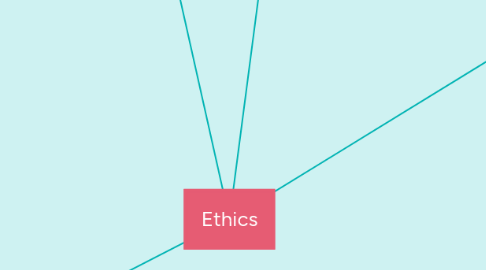
1. Code of Ethics
1.1. AOTA Code of Ethics
1.1.1. Structure of the Code
1.1.1.1. Preamble
1.1.1.1.1. Purposes of the Code
1.1.1.2. Core values
1.1.1.2.1. Altruism, equality, freedom, justice, dignity, truth, prudence
1.1.1.3. Principles
1.1.1.3.1. Beneficence, nonmaleficence, autonomy, justice, veracity, fidelity
1.1.1.4. Standards of Conduct
1.1.1.4.1. Professional Integrity, responsibility, and accountability
1.1.1.4.2. Service Delivery
1.1.1.4.3. Professional Civility
1.1.1.4.4. Therapeutic Relationships
1.1.1.4.5. Professional Competency, Education, Supervision, and Training
1.1.1.4.6. Documentation, Reimbursement, and Financial Matters
1.1.1.4.7. Communication
2. Definition & Purpose
2.1. Moral philosophy
2.2. Tool for thinking and problem-solving moral issues
2.3. Serves as a decision-making guide
2.4. May help define obligations
2.5. What to do vs. what not to do
3. Plagiarism
3.1. Definition: the presentation of another person's writing, images, ideas, etc., or work in general as your own or without proper acknowledgement
3.2. Can be intentional or unintentional
3.3. Different forms
3.3.1. Verbatim, word-for-word
3.3.2. Paraphrasing without citation
3.3.3. Patchworking, mosaic
3.3.4. Inaccurate citations
3.3.5. Self-plagiarism
3.3.6. Collusion or collaboration
3.3.7. Hired plagiarism
3.3.8. Borrowed plagiarism
3.4. Violates ethical standards and academic integrity
3.5. Fails to demonstrate respect for hard work and ideas of others
4. Technology
4.1. Confidentiality and HIPAA
4.1.1. Confidentiality is an ethical value
4.1.1.1. Keeps private or sensitive information secure
4.1.1.2. Promotes dignity and security
4.1.1.3. Enhances the therapeutic relationship
4.1.2. HIPAA: Health Insurance Portability and Accountability Act
4.1.2.1. Federal law
4.1.2.2. Protects health information of individuals
4.1.2.3. "Privacy rule" dictates what my be shared, under what circumstances health information may be shared, and how it may be used
4.1.2.4. "Security Rule" governs the confidentiality and security of electronic protected health information
4.1.3. Medical documentation is legal documentation
4.2. Social Media
4.2.1. Positive aspect:
4.2.1.1. Connecting and sharing with people who have similar interests
4.2.1.2. Ability to share information quickly
4.2.2. Questionable aspect:
4.2.2.1. Emerging evidence of the influence of social media on behavior
4.2.2.2. Sharing true and vetted information
4.2.2.3. Bias - anyone can search anyone
4.3. Portable devices
4.3.1. Personal use
4.3.1.1. Do NOT use personal devices for any HIPAA protected documentation
4.3.1.2. Never texted protected health information
4.3.1.3. Bluetooth is known for lack of security
4.3.2. Professional use
4.3.2.1. Portable devices are often used for documentation
4.3.2.2. Safety solutions - passwords and protection
4.3.2.3. Possibly have professional cellphone or hard drives
4.4. Telehealth
4.4.1. Emerging and more widely used due to COVID-19
4.4.2. Ensure client's safety and your competence to deliver in this manner
4.4.3. Consider the client's ability to reach their goals
4.4.4. Must consider the security of the technology and the environment of the clinician and client
